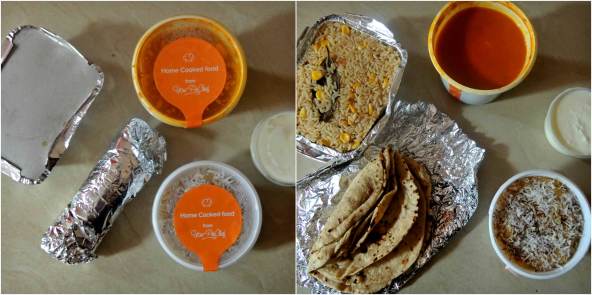Imagine this situation.
You’ve been quite busy. Now, you are extremely tired and stressed out. Or you are unwell. And hungry. You are in no mood to cook, but you want something warm and nice to eat. What would you do? Order in from the nearest restaurant?
How would you feel if someone offered you comforting home-cooked food then? That is precisely where PinStove comes in.
What is PinStove?
PinStove, a very new entry in the foodie world in Bangalore, is a food delivery app with a difference. They offer doorstep delivery of fresh, home-cooked food at a nominal delivery charge. You get to choose the dishes you want to order, from any of the home cooks in your immediate surroundings.
How does PinStove work?
PinStove works on building relationships with home cooks across Bangalore (and Trivandrum, the only other place where these services are available, as of now). These home cooks can display the food they want to sell on the PinStove app, which are usually available at very reasonable rates. Main course for lunch and dinner, snacks, desserts, breakfast as well as bakery items are on offer on PinStove.
As a user, this is what you need to do, to order from PinStove:
- Download the app on your phone.
- Set your location.
- The home cooks in their network in your vicinity will show up. Choose the chef you want to work with and the food you would like delivered.
- Confirm the order. At a flat rate of INR 35, you can get the home-cooked food of your choice delivered to your home. You will be shown the approximate time it would take for the food to reach your place. You also have the option of pre-booking your meal.
My experience with PinStove
I ordered food twice from PinStove, from two different home chefs, at two different times.
The first time, I ordered lunch – phulka rotis, mutter paneer, corn pulao and sheera. All the food was delivered piping hot to our place, well packed, well within the specified time limit.
The phulkas were a tad thicker than the ones we are used to, but still, definitely not bad. The mutter paneer was a little watery, but the taste was lovely. The corn pulao was beautiful, very well done. The curd that accompanied the pulao was thick, but a tad sour. The sheera was lovely, both in looks and taste, garnished with dry fruits and nuts and dried coconut flakes.
The food was definitely homely, a far cry from the greasy, creamy stuff you get in restaurants usually.

The second time over, I ordered some evening snacks – onion pakoras and sabudana khichdi. By the time the food reached my place, some of the packages had opened, food had spilt and gotten mixed up. The sabudana khichdi had been packed while really hot, and had got congealed into one big mass. We could salvage only very little food from that order – a real bummer when you are hungry and tired.
There were issues with the packaging, maybe, or the food got jolted a bit too much during the delivery – I am not sure. I wish such issues are resolved.

My thoughts about PinStove
- The app is a little cumbersome to use. I had to fidget with it to place an order initially, but then I got the hang of it. That could be because the platform is very new. In time, I hope the interface is worked upon to become more user-friendly.
- There are very few home cooks I could see tied up with PinStove in my vicinity. I am guessing that with time, as more chefs get on board, customers would have a lot more to choose from.
- I really loved the concept of PinStove, and I think it would be a boon to health-conscious individuals who are in a time crunch. Using PinStove also means supporting home chefs, giving them a respectable identity, helping them earn some extra bucks, which I love.
- Both the times we ordered from PinStove, the delivery was within the specified time limit. The food was delivered piping hot.
- The first time I ordered from PinStove, the food was really well packed and arrived home in perfect condition. The second time around, our experience wasn’t all that great. That said, I believe this is something that can happen while ordering from anywhere, restaurants included. I would still love to order from them, because I love the concept of getting home-cooked food delivered at my doorstep.
- The food is usually delivered in plastic containers, as is usually the case with home delivery of food. I understand this is for ease of packaging and transit, as well as budget factors, but it would be great if PinStove could introduce eco-friendly packaging as well. I’m not sure if that would work out within the price range they offer, but one can hope, can’t they?
- I found the price of the food to be quite reasonable. The first order cost about INR 400 and the second one INR 170, both including delivery charges.
So, the next time you are hungry and unable to cook at home, you know where to turn to! Do try out PinStove!
I was approached by PinStove for an honest review about the app, and that is exactly what this is. The opinions expressed herein are entirely my own, not influenced by anything or anyone.




